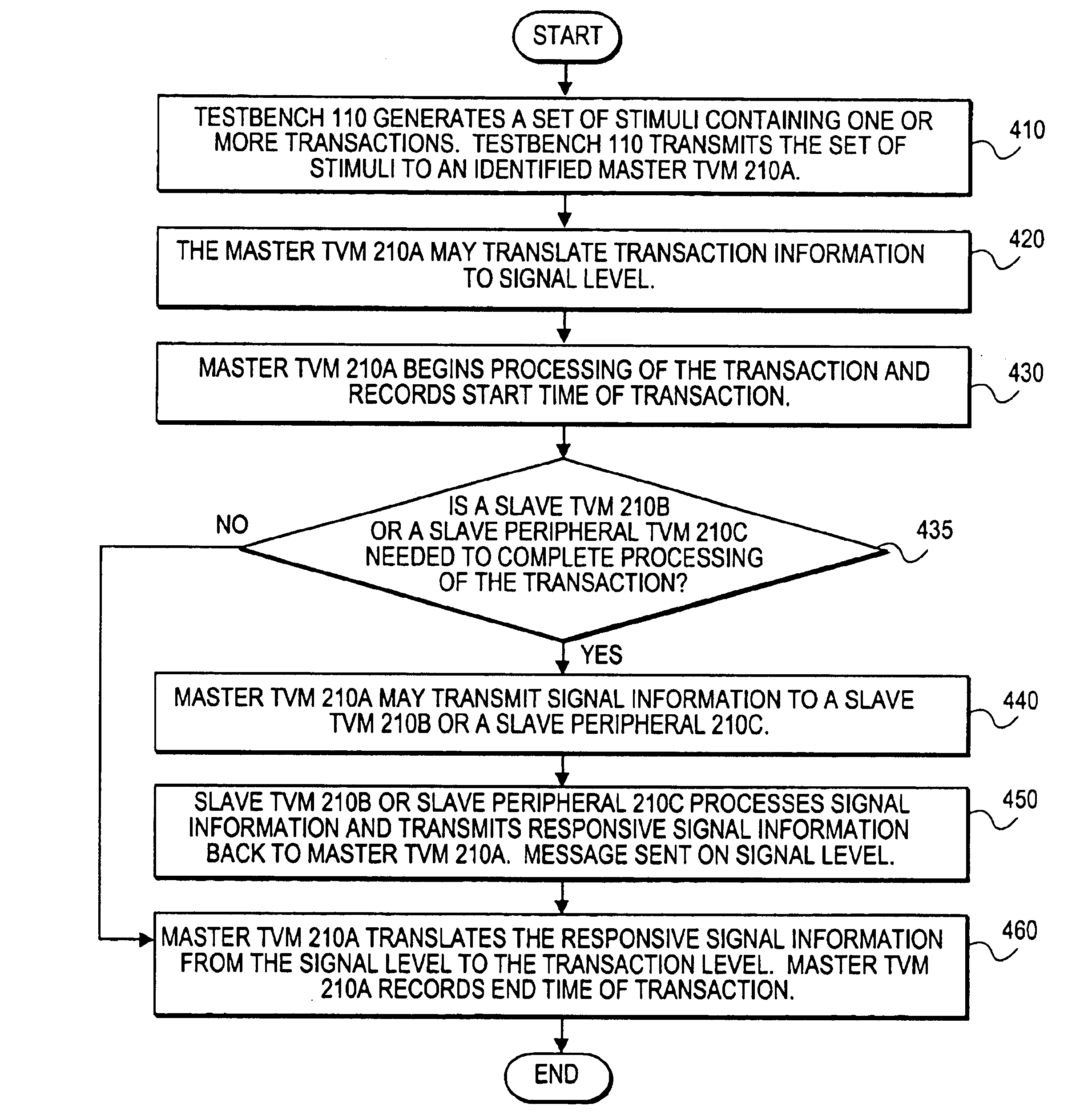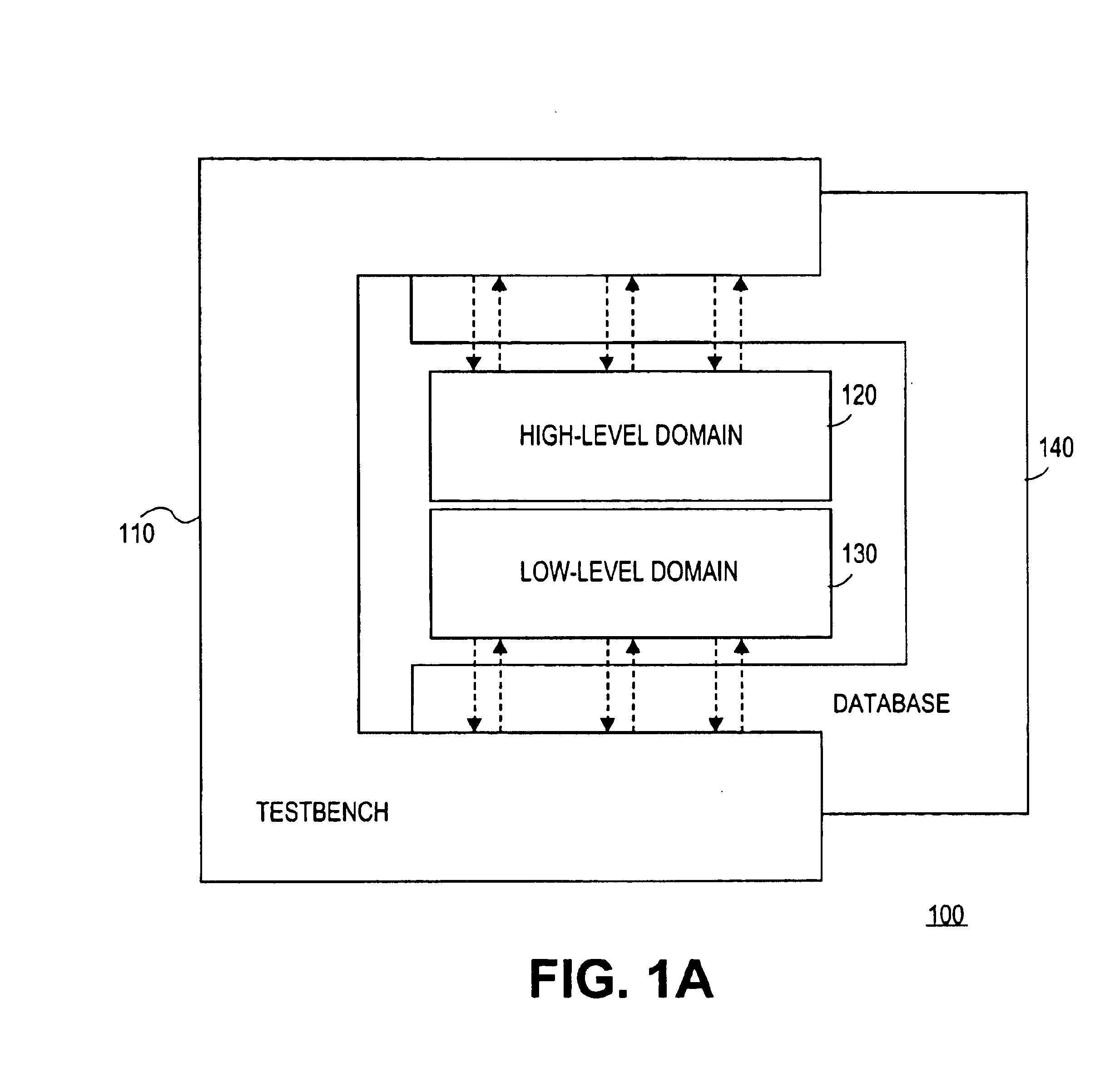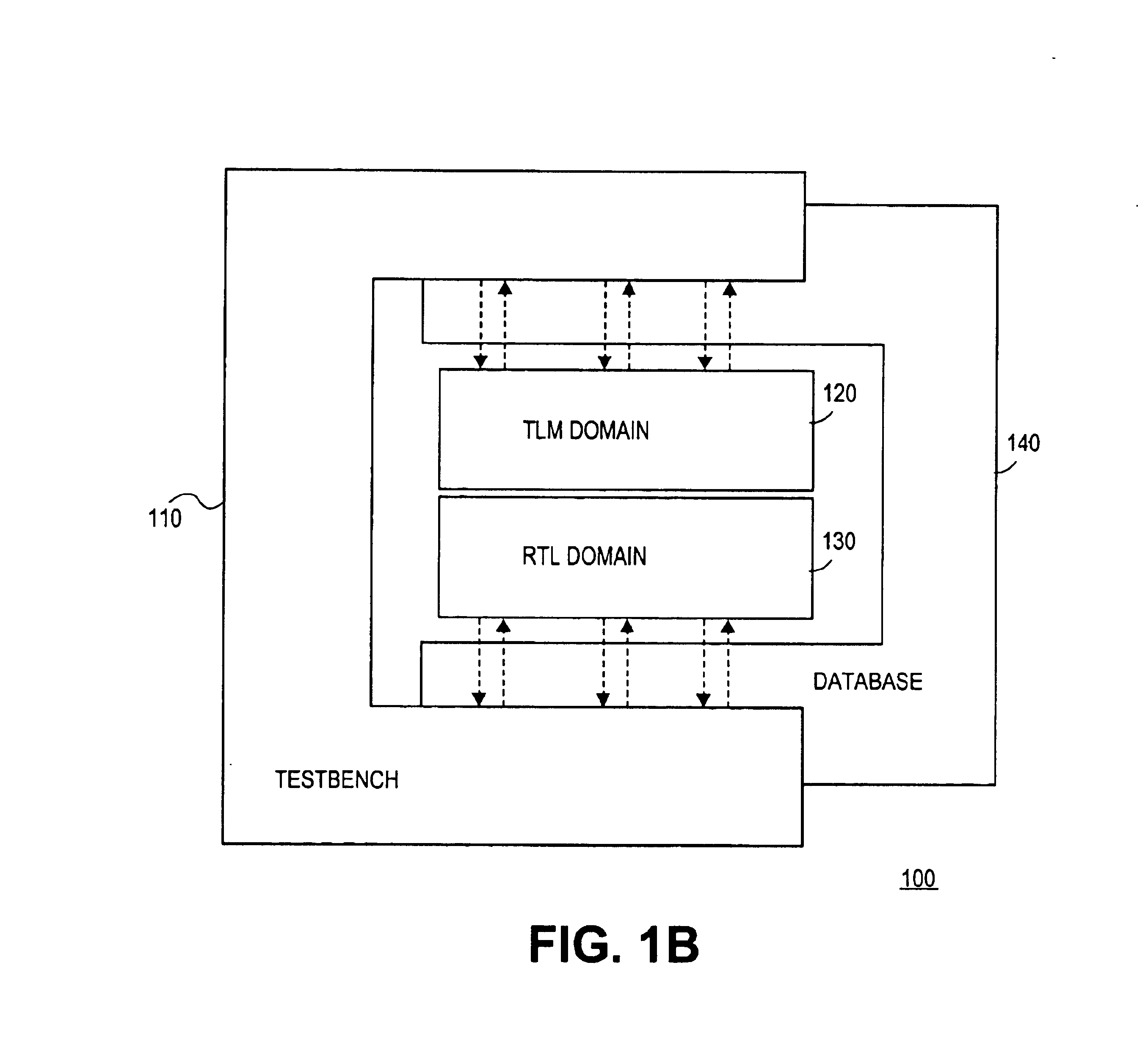Method and mechanism for improved performance analysis in transaction level models
a transaction model and performance analysis technology, applied in the field of system level design, can solve the problems of tlm models not being tested and validated, affecting the accuracy of transaction models, and no mechanism for testing and validating tlm models against their rtl equivalent models, etc., to achieve the effect of increasing the performance of system blocks, facilitating the development of designs faster and efficiently, and facilitating the development of designs
- Summary
- Abstract
- Description
- Claims
- Application Information
AI Technical Summary
Benefits of technology
Problems solved by technology
Method used
Image
Examples
Embodiment Construction
)
In the following description, for the purposes of explanation, numerous specific details are set forth in order to provide a thorough understanding of the present invention. It will be apparent, however, to one skilled in the art that the present invention may be practiced without these specific details. In other instances, well-known structures and devices are shown in block diagram form in order to avoid unnecessarily obscuring the present invention.
Embodiments of the invention advantageously provide for performing improved transaction timing analysis through the employment of a performance validation system 100. FIG. 1A is a graphical illustration of a performance validation system 100 according to an embodiment of the invention. As FIG. 1A shows, the performance validation system 100 comprises a testbench 110, a high-level domain 120, a low-level domain 130, and a database 140. Each of the testbench 110, high-level domain 120, low-level domain 130, and database 140 are operativ...
PUM
 Login to View More
Login to View More Abstract
Description
Claims
Application Information
 Login to View More
Login to View More - R&D
- Intellectual Property
- Life Sciences
- Materials
- Tech Scout
- Unparalleled Data Quality
- Higher Quality Content
- 60% Fewer Hallucinations
Browse by: Latest US Patents, China's latest patents, Technical Efficacy Thesaurus, Application Domain, Technology Topic, Popular Technical Reports.
© 2025 PatSnap. All rights reserved.Legal|Privacy policy|Modern Slavery Act Transparency Statement|Sitemap|About US| Contact US: help@patsnap.com



